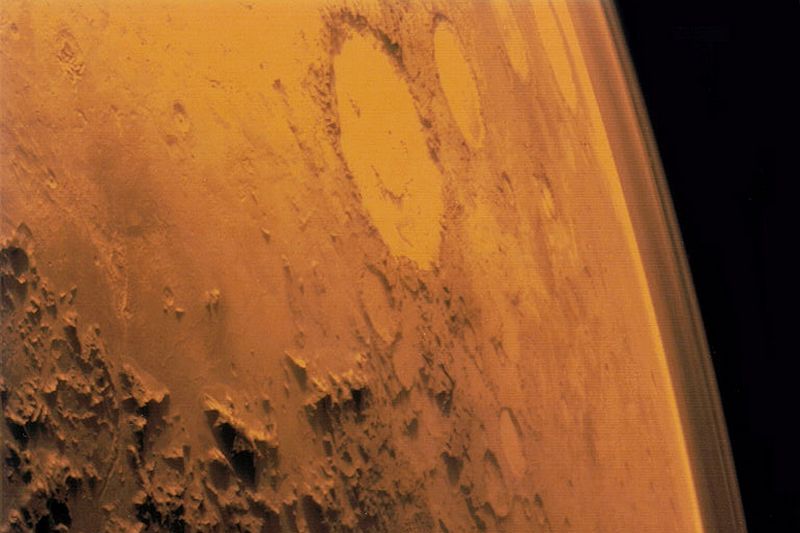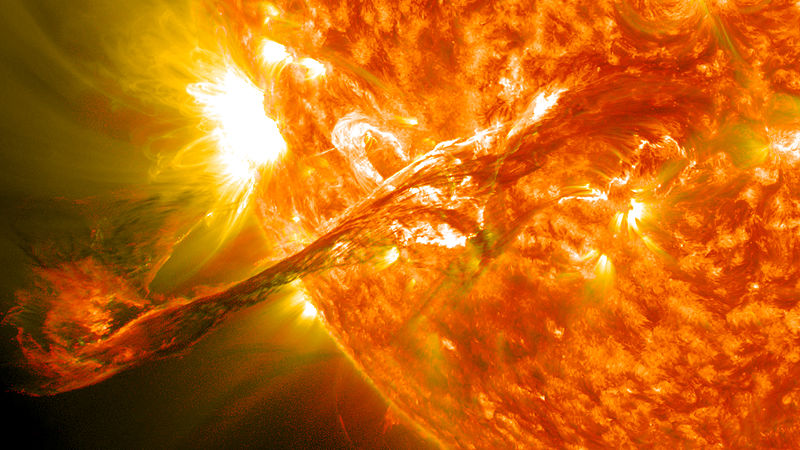Researchers Think the Sun Could Have Caused the ‘Demise’ of Mars
Scientists think that Mars used to be a warm and breezy world with enormous oceans similar to what Earth has now. It didn’t become the cold desert wasteland (relative to Earth’s conditions) right from the start. That’s why scientists have been trying to find out for decades what caused Mars to become what it has become at present.
The good news is that scientists think they may already have the answer. Based on new research released by the team responsible for the Mars Atmosphere and Volatile Evolution (MAVEN) mission, the celestial body that has been keeping Mars in its orbit could also be the same source of the “demise” of Mars. MAVEN has been orbiting the red planet for around a year now. It entered orbit around Mars on September 22 last year and has already traveled more than 442 million miles or 711 million kilometers.
MAVEN’s Findings
In a research article entitled “MAVEN Observations of the Response of Mars to an Interplanetary Coronal Mass Ejection,” researchers present evidences that show the sun’s involvement in the depletion of the Martian atmosphere. It was found that Mars’ atmosphere responded to coronal mass ejections (CME) through changes in the bow shock and magnetosheath, the development of wide-ranging diffuse aurora, and the enhancement of pick-up ions or the increased escape of ions to space.
The MAVEN mission, on its second Deep Dip campaign, conducted comprehensive measurements of the composition of Mars’ thermosphere and ionosphere, its structure, and variability at altitudes as low as 130 kilometers (from the perspective of MAVEN) in the subpolar region. Their in situ measurements reveal that that the upper atmosphere has unmeasured populations of neutral and charged particles with an unexpected variability on an orbit-to-orbit basis and within individual orbits.
In March 2015, MAVEN was conducting measurements when a huge plasma and magnetism blast reached the Martian atmosphere brought about by a coronal mass ejection. What MAVEN discovered then can be considered a breakthrough of sorts.
After the CME hit the thin atmosphere of Mars, it pulled tendrils of Mars’ magnetic field into space while charging particles in the atmosphere. As the tendrils of magnetic fields were yanked thousands of miles into space, the charged air particles diffused into space following the paths formed by the tendrils of magnetic fields. As the laws of physics would have it, these charged particles that traveled into space were then lost from the Martian atmosphere forever.
Sun-Induced Depletion of Martian Atmosphere
MAVEN recorded the atmosphere loss at only around one fourths of a pound per second. This would appear very minimal but considering how big the sun was millions of years ago and how powerful the CMEs it could have released, the situation would be significantly different. When a star like the sun is billions of years younger, its CMEs also tend to be more frequent.
According to one of the authors of the study, University of Colorado geologist Bruce Jakosky, in an email sent to Tech Insider, the loss discovered is relatively low but it is enough to remove the entirety of the Martian atmosphere in a few billion years. This is likely the reason why Mars at present has a pressure of only 1% of what Earth has.
Sun-Induced Water Depletion
It is also possible that water from Mars was similarly depleted by the sun’s CMEs. A separate MAVEN study found that hydrogen and oxygen escape into space from Mars’ atmosphere at a higher rate. Water is made of hydrogen and oxygen and hydrolysis (the separation of hydrogen and oxygen atoms of a water molecule) can naturally occur so it is possible that the Martian stock of hydrogen and oxygen escaped into space in a manner similar to what has been described above.
The researchers, however, emphasized that this is just one of the possibly explanations as to why Mars has a very thin atmosphere and extremely scarce water supply. It’s a promising story but not conclusive. Also, it does not provide evidence on whether or not there was life in Mars before. It can help bring mankind closer, though, to understanding what makes a planet eventually uninhabitable even by microbes.


